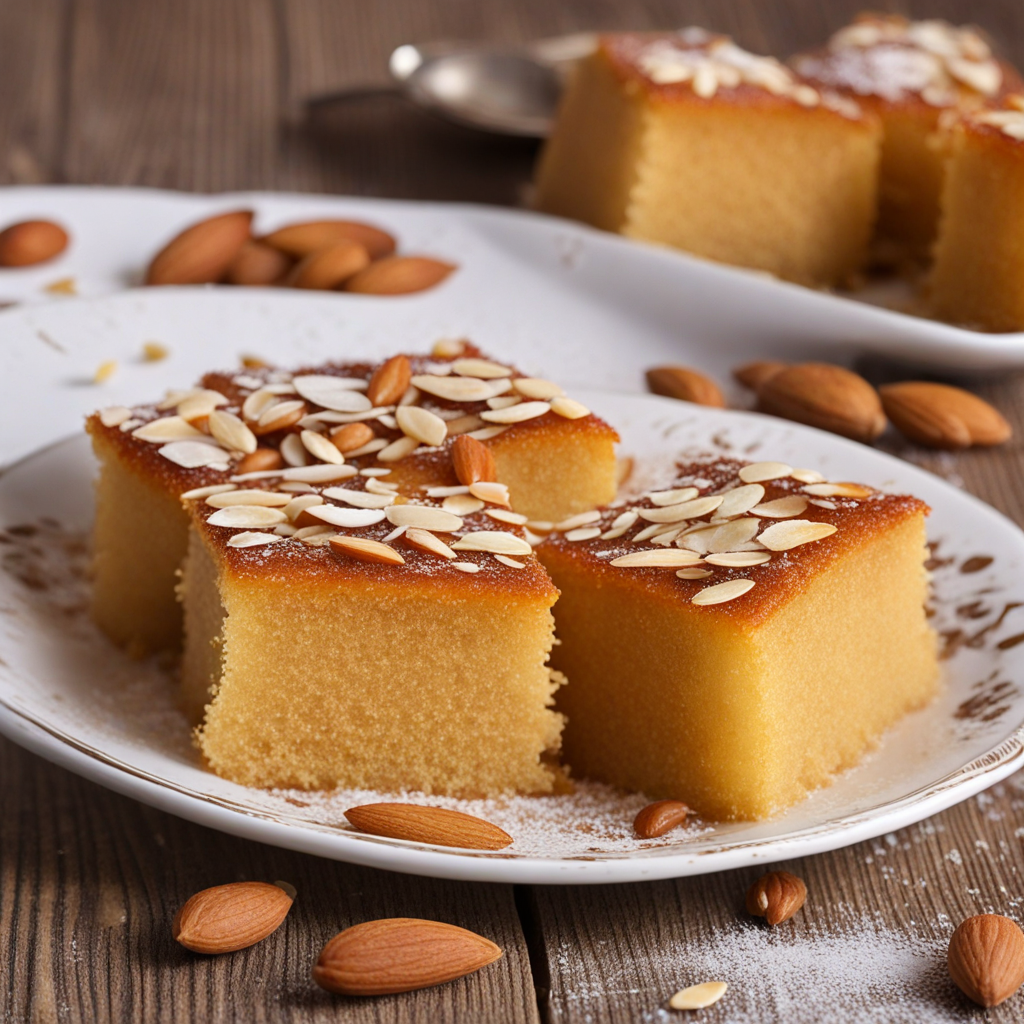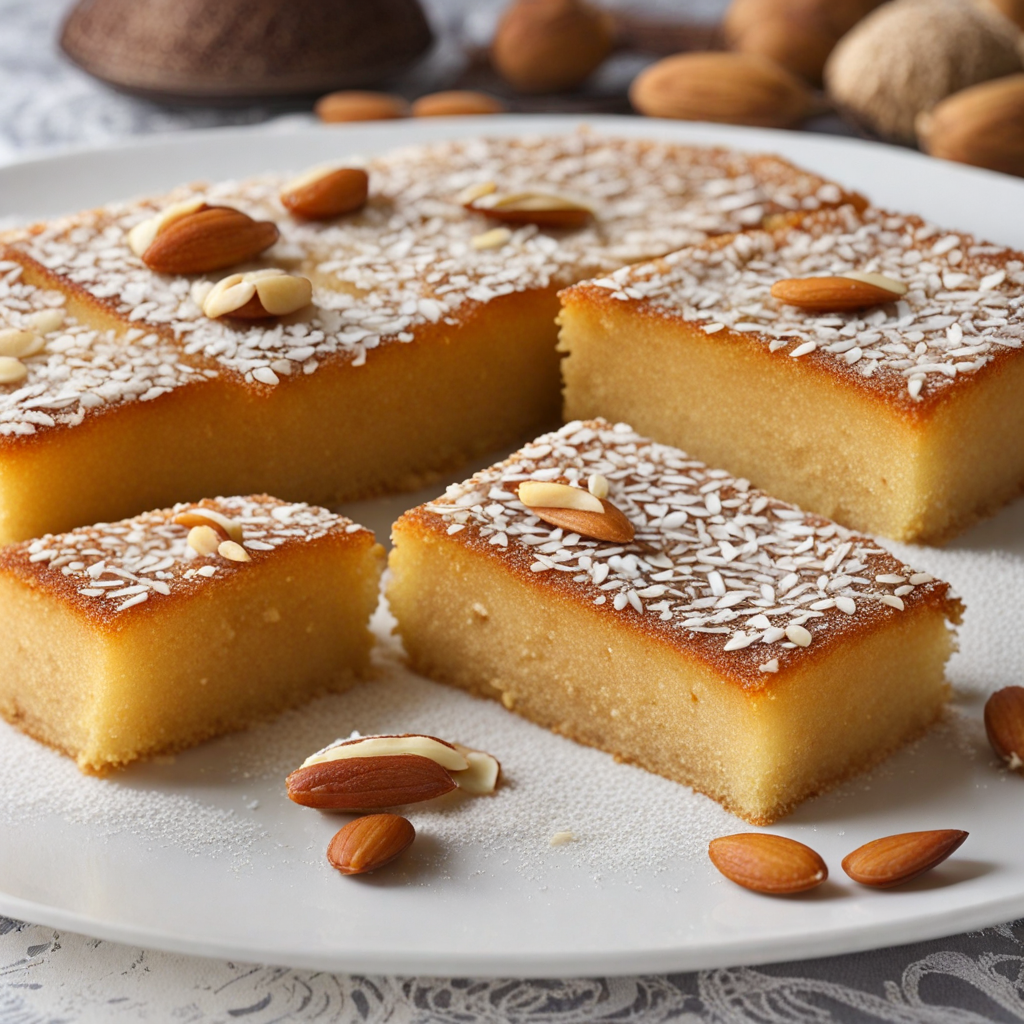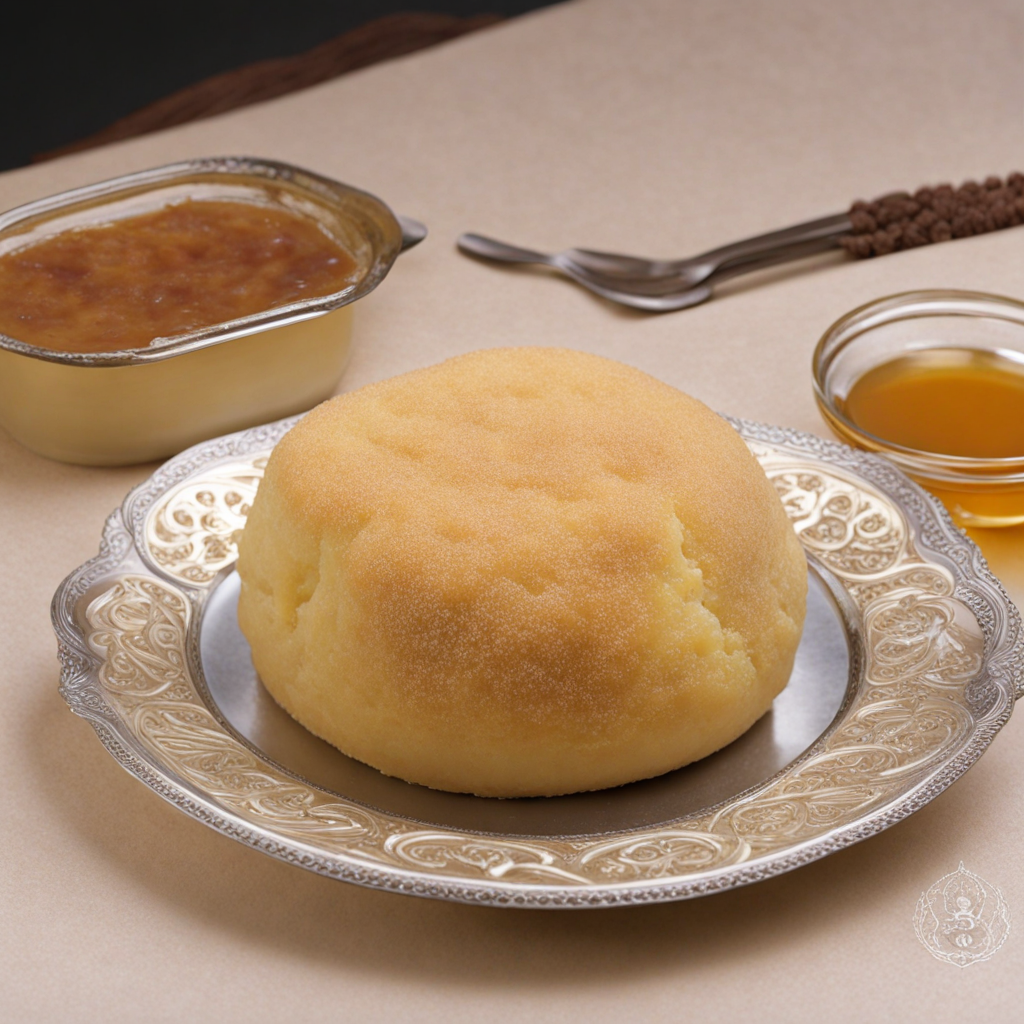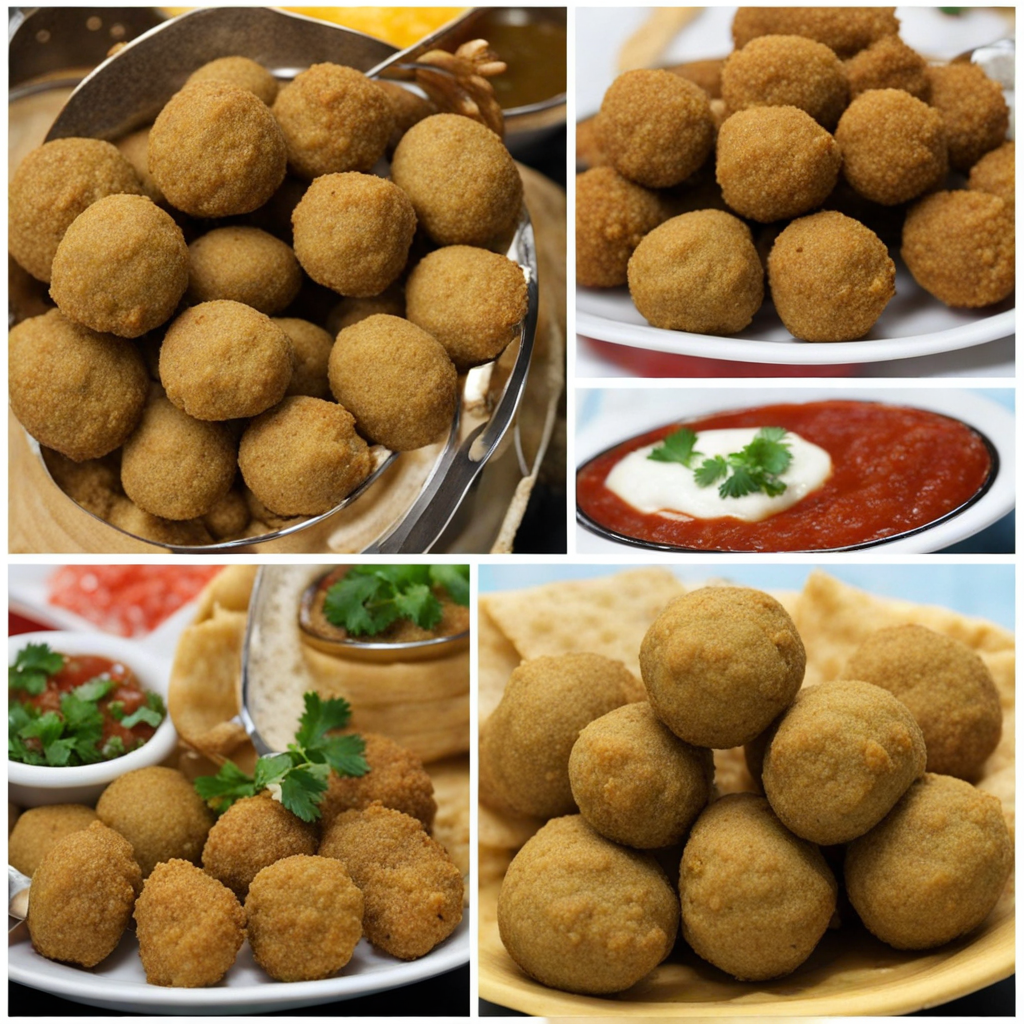Basbousa
Basbousa, a delightful dessert hailing from Saudi Arabia, is a semolina-based cake that embodies the essence of Middle Eastern sweets. This delectable treat is characterized by its moist and tender texture, achieved through the use of fine semolina flour, which gives it a unique grainy quality. Traditionally, Basbousa is sweetened with a fragrant sugar syrup infused with rose or orange blossom water, lending it a floral aroma that perfectly complements its rich flavor. Topped with slivered almonds or pine nuts, it offers a delightful crunch that contrasts beautifully with the soft cake beneath. One of the defining features of Basbousa is its simplicity. The ingredients are pantry staples, making it an accessible dessert for home bakers. The batter is typically flavored with yogurt or milk, which adds a subtle tanginess and helps to keep the cake moist. Baked until golden brown, Basbousa is then drizzled with syrup while still warm, allowing the sweet liquid to soak in and enhance its decadence. Each bite is a harmonious blend of sweet, nutty, and floral notes that transport you to the vibrant streets of Saudi Arabia. Basbousa is not just a dessert; it's a cultural experience often enjoyed during special occasions and gatherings. Whether served at weddings, festive celebrations, or shared among family and friends, this cake brings people together through its inviting flavors. It's typically cut into diamond or square shapes, making it easy to share and enjoy. For those looking to discover a new taste, Basbousa offers a sweet escape into the rich culinary heritage of Saudi Arabia, inviting you to savor each bite and appreciate its unique charm.
How It Became This Dish
The Sweet Journey of بسبوسة: A Culinary Treasure of Saudi Arabia Origin and Etymology Basmousa, known as بسبوسة in Arabic, is a beloved dessert that has its roots in the Middle East, with its origins often traced back to the Levant region. The name "بسبوسة" derives from the Arabic word "بس," which means "to sprinkle," referring to the way the semolina is prepared and combined with syrup. In its most basic form, بسبوسة is a semolina cake soaked in sweet syrup, enriched with yogurt or milk, and often flavored with coconut or almonds. While its precise origins are shrouded in the mists of time, it is widely believed that بسبوسة has been enjoyed for centuries, evolving alongside the rich tapestry of Middle Eastern culinary traditions. Cultural Significance In Saudi Arabia, بسبوسة is more than just a dessert; it is a symbol of hospitality and celebration. It is a staple at festive occasions, including weddings, birthdays, and religious holidays such as Eid al-Fitr and Eid al-Adha. The act of serving بسبوسة to guests reflects the warmth and generosity that characterize Saudi culture. Traditionally, families would prepare large trays of بسبوسة to share with neighbors and friends, reinforcing community bonds and fostering a sense of togetherness. The dessert's significance is also tied to its simplicity and accessibility. Made from affordable ingredients like semolina, sugar, and yogurt, بسبوسة can be prepared by anyone, regardless of culinary skill. This quality has made it a beloved dish across various socio-economic backgrounds, further embedding it in the cultural fabric of Saudi society. Additionally, the dish has found its way into the homes of expatriates and migrants, becoming a symbol of cultural exchange and adaptation. Development Over Time The history of بسبوسة is a fascinating reflection of the broader culinary evolution in the Middle East. The use of semolina dates back to ancient times, and it was a staple grain for various civilizations in the region. As trade routes expanded and cultural exchanges flourished, the ingredients and techniques for making desserts like بسبوسة evolved. During the Ottoman Empire, the art of pastry-making reached new heights, and many Middle Eastern sweets were refined. Though بسبوسة may not have been featured prominently in royal banquets, its humble origins as a home-cooked treat persisted, allowing it to maintain its authentic character. This period also saw the introduction of various flavorings and garnishes, with almonds, pistachios, and coconut becoming popular additions to the basic recipe. In the 20th century, the globalization of food culture brought about significant changes to traditional recipes. As Saudi Arabia opened up to international influences, بسبوسة began to adapt to modern tastes. New variations emerged, incorporating flavors like rose water, saffron, or even chocolate, catering to the preferences of a younger generation. These adaptations have not only helped preserve بسبوسة's place in the culinary landscape but have also allowed it to thrive in a contemporary context. Regional Variations While بسبوسة is widely loved throughout Saudi Arabia, it is also a dish that varies by region. In the coastal areas, particularly Jeddah, you might find a version of بسبوسة that incorporates coconut, giving it a tropical flair. Meanwhile, in the central region, the cake may be garnished with almonds or walnuts, adding a crunchy texture that contrasts beautifully with the soft, moist cake. Each region’s unique take on بسبوسة reflects local tastes and ingredient availability, showcasing the diversity within a seemingly simple dish. Baking and Preparing بسبوسة The preparation of بسبوسة is an art form in itself. The basic recipe is straightforward, requiring semolina, sugar, yogurt, baking powder, and butter. The semolina is mixed with the other ingredients to create a batter that is poured into a greased baking pan and baked until golden brown. Once out of the oven, a sweet syrup made from sugar and water is poured over the hot cake, allowing it to soak in and infuse the dessert with sweetness and moisture. One of the key techniques in making بسبوسة is the use of yogurt, which not only adds moisture but also contributes to the cake's tender crumb. Some variations might include the addition of milk or even cream for a richer texture. The topping is often a matter of personal preference; while some might opt for a simple dusting of powdered sugar, others might get creative with nuts, chocolate, or even fruit. Modern Popularity and Globalization In recent decades, بسبوسة has gained international recognition, finding its way onto menus in Middle Eastern restaurants around the world. This global reach has introduced the dish to diverse audiences, contributing to its popularity beyond the Middle East. In the United States, Canada, and Europe, بسبوسة is often featured in Middle Eastern grocery stores and bakeries, where it attracts curious food lovers eager to explore Middle Eastern cuisine. Social media has played a significant role in the resurgence of interest in traditional dishes like بسبوسة. Home cooks and food enthusiasts share their unique takes on the dessert, experimenting with new flavors and presentation styles. This not only keeps the dish relevant but also inspires a new generation of bakers to explore their cultural heritage through food. Conclusion Bسمبوسة encapsulates the essence of Saudi Arabian culinary culture: a dish that is steeped in history yet adaptable to modern tastes. It represents not only the flavors of the region but also the values of community, hospitality, and celebration. As it continues to evolve and inspire, بسبوسة stands as a testament to the enduring power of food to connect people across generations and geographies. Whether enjoyed in a family gathering, at a festive celebration, or discovered in a new country, بسبوسة remains a sweet reminder of the rich culinary traditions that shape our identities.
You may like
Discover local flavors from Saudi Arabia







